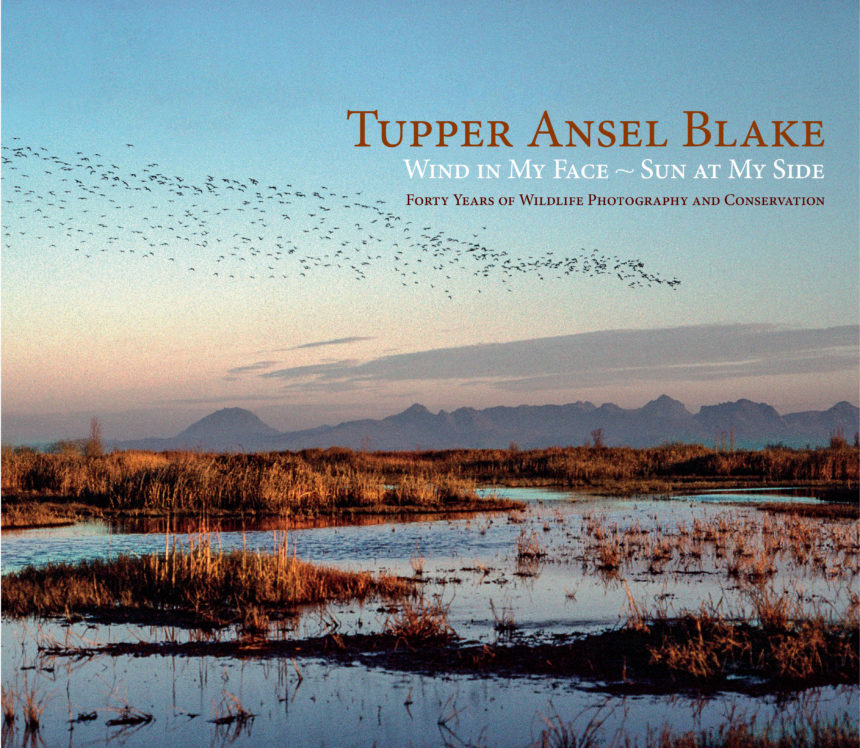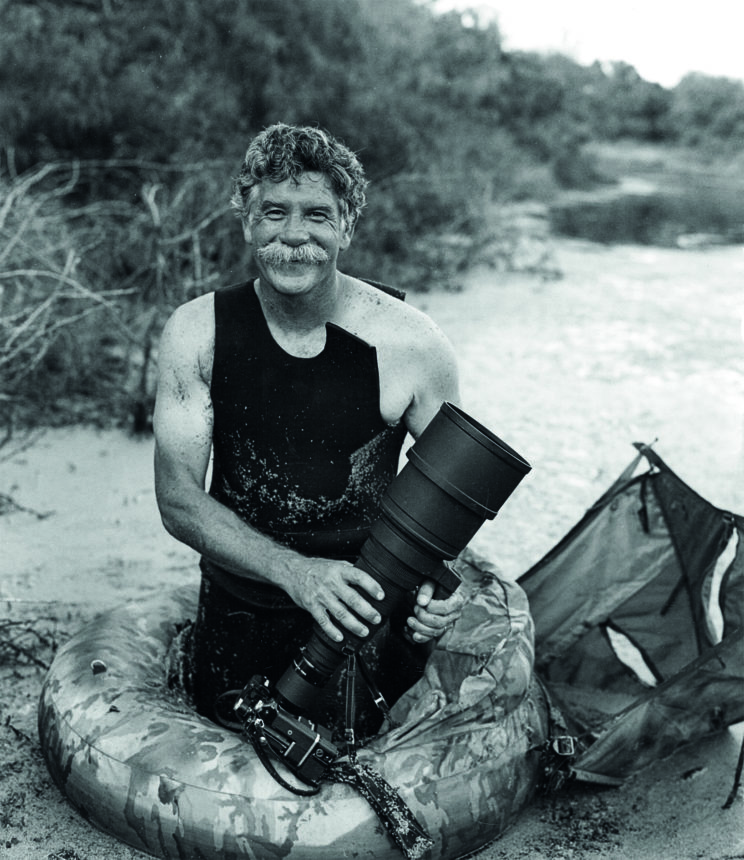
Jun 4, 2020
BOOK REVIEW: 'Wind in my face, sun at my side'

Tupper Ansel Blake used photography to show the beauty and value of wetlands. Click here to buy on Amazon.
BY YANCEY FOREST-KNOWLES
(Originally published in the Summer 2020 issue of California Waterfowl)
In this new autobiography, Wind in My Face, Sun at My Side, by Tupper Ansel Blake, more than 300 extraordinary photographs illustrate the life story of one of the nation’s preeminent wildlife photographers. Tupper’s 40-year career spanned what many consider to be the golden age of conservation.
This elegant work successfully weaves his stories and photography with nature and habitat conservation, which makes perfect sense. After all, photographers have long sought to find truth in nature. Its 237 pages will pin you to your chair with its honesty and passion, and then hold you there with the book’s wisdom and grace. This work of art is a journey into a world dedicated to the lure of nature and the efforts to restore it. The title elicits images all outdoorsmen and women can relate to: those magical, fleeting times when nature resonates with the promise of a perfect day.
This book should be savored and not simply read. The stories and insights are more than narrations of what occurred during his life. They are profound interpretations of his experiences. They reveal the way outdoorsmen, women and conservationists have worked together with remarkable results. Each story offers perspective on land use, loss, conservation and the environmental issues at stake in our wildlands. Throughout, Tupper makes a persuasive argument for identifying and protecting unspoiled areas before they disappear, especially his beloved wetlands. As you read, you’ll be inspired by his concern for the environment and how he is credited with helping preserve much of the land that is now in national, state and private protection. It’s obvious that Tupper has a deep love of the outdoors and is delighted by nature’s beauty.
Tupper’s writing style is very readable and mingles authority, dignity and charm. He brings you right into his stories as if you are actually part of them. He captures your imagination and always leaves you with thoughts to ponder. The book is replete with life lessons and sage advice, the kind of wisdom that comes from a uniquely lived life.
In the 1970s, he began his career as a professional wildlife photographer. Tupper went the normal route of the time by contributing his photos to magazines. In 1978 he met Starker Leopold, professor emeritus of Conservation and Forestry at Berkeley. Starker encouraged Tupper to undertake longer photographic surveys of specific conservation issues for major conservation organizations. Tupper asked Starker what he thought the most pressing issue was.
“The conservation of wetlands and all wetland-dependent species,” said Starker.
The die was cast.
With this new format and approach, Tupper achieved success with Audubon, The Nature Conservancy, Sierra Club, U.S. Fish & Wildlife Service and major conservation foundations. These partnerships resulted in five highly acclaimed books, multiple national magazine and journal publications, and several gallery and museum exhibitions across North America. During this time, he was the recipient of numerous awards, such the A. Starker Leopold Award for Exceptional Efforts to Conserve Waterfowl & Wetlands and the Sierra Club’s Ansel Adams Award. He was inducted into the California Waterfowler’s Hall of Fame in 2018.

Tupper Ansel Blake’s drive to get the best photos often put him in life-threatening situations. He was once chased by a grizzly while getting photos in Montana. Another time, he used a float tube to enter alligator-infested waters in Texas.
With today’s lightweight, inexpensive digital cameras, it is difficult to appreciate Tupper’s efforts. He’d haul immensely heavy loads of photographic equipment and life-sustaining gear across remote areas in search of once-in-a-lifetime wilderness shots. Often, his adventures involved great hardships and life-threatening situations. Once, he was charged by a grizzly bear in the Montana wilderness. In Texas, he entered alligator-infested waters in a float tube. On the Mexico-US border, gun-toting drunks harassed him as he worked to get the images he came for.
Tupper never developed an interest in anything digital. He retired some 11 years ago when it was no longer convenient to develop his workhorse film, Kodachrome 64. Tupper closes his book with a wonderful account of how, in good fortune, he acquired a run-down 160-acre homestead on the California-Oregon border in the Klamath Basin. After decades of having helped to save federal, state and other peoples’ lands, this fulfilled his dreams of creating his own wetlands. Tupper learned of the Wetland Reserve Program. After putting the land in a conservation easement, he received funding for its restoration. Like from a dream, the restoration was completed in two years instead of the 10 years originally expected. In 1991, the water turned on and flooded the newly created wetlands. You can imagine his joy!
To complete his dreams, after 12 years of off-and-on work, Tupper restored a century-old log cabin compound atop a 200-foot-high volcanic cinder cone in the middle of his marsh. The views of the Lower Klamath National Wildlife Refuge are breathtaking. Tupper is a storyteller par excellence. He has filled his crafted stories with a heady blend of insight, reflection and knowledge gained through years of experience. Tupper puts into words what many of us feel, yet find difficult to express. Beyond that, he is a delightful dispenser of sporting wisdom.
Throughout the book, his great love of waterfowl hunting is clearly communicated in both words and photos. Any passionate duck hunter can imagine himself or herself in these photos. Tupper is the keeper of many stories, not only about wildlife, but about conservation and the dedicated people he met who advanced conservation efforts for all things wild. His writings are also filled with good-natured humor and mischief. The story of Mick, the Diminutive Duck Dog, in particular, will leave you laughing and in high spirits. Tupper is one of my favorite wits and definitely one of my favorite people. He is no ordinary man.
Today, Tupper lives in active retirement on his Marsh Island Ranch where he continues his commitment to bring conservation issues before the public and restore his beloved wetlands.
His large-format book is available at Amazon.com for $60. A portion of each sale will be divided equally between California Waterfowl, Ducks Unlimited, Audubon California and The Nature Conservancy. This book would be a valued addition to any outdoor enthusiast’s or conservationist’s library, or the perfect gift for a wildlife art connoisseur.


